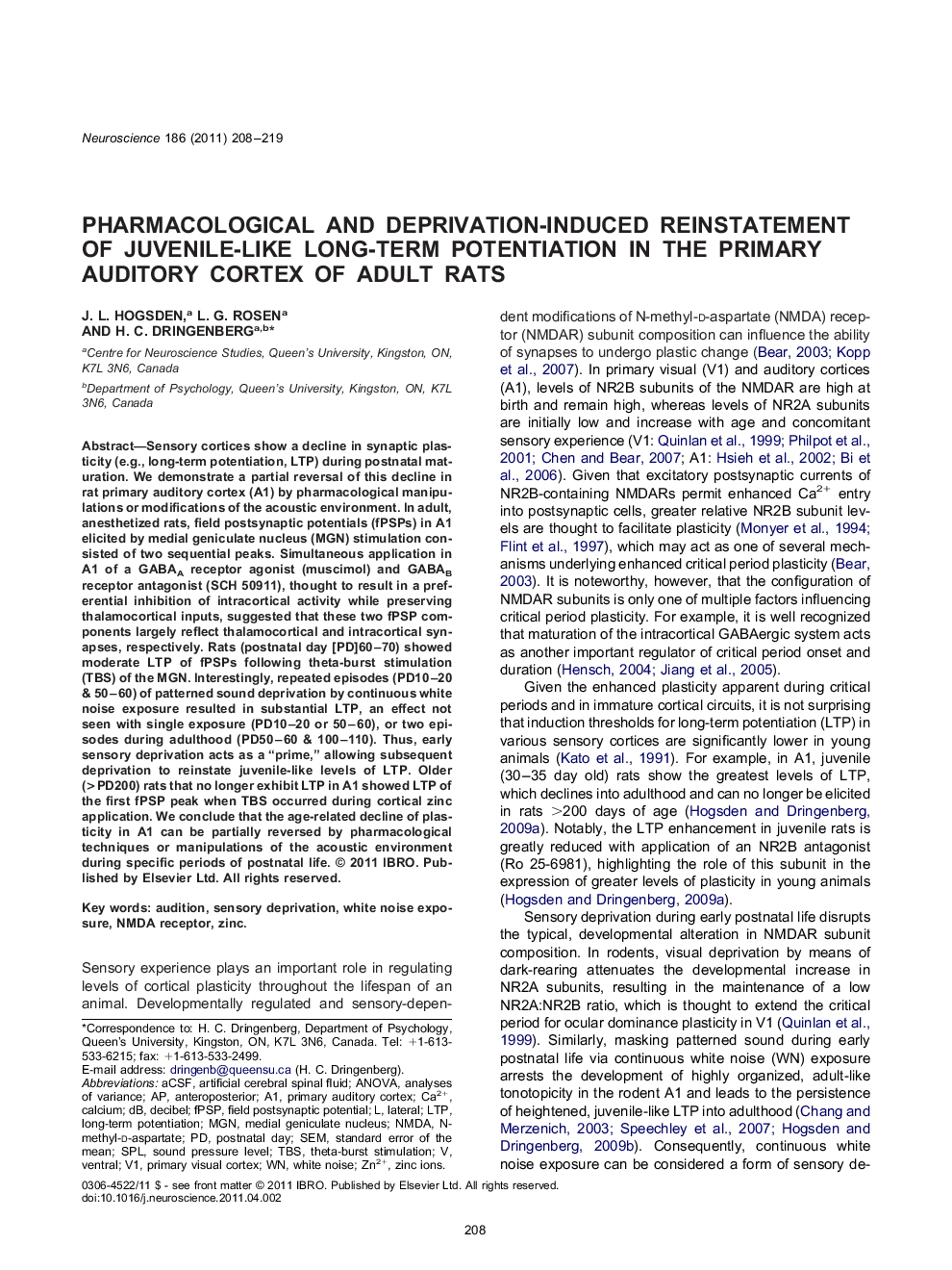| Article ID | Journal | Published Year | Pages | File Type |
|---|---|---|---|---|
| 4338883 | Neuroscience | 2011 | 12 Pages |
Sensory cortices show a decline in synaptic plasticity (e.g., long-term potentiation, LTP) during postnatal maturation. We demonstrate a partial reversal of this decline in rat primary auditory cortex (A1) by pharmacological manipulations or modifications of the acoustic environment. In adult, anesthetized rats, field postsynaptic potentials (fPSPs) in A1 elicited by medial geniculate nucleus (MGN) stimulation consisted of two sequential peaks. Simultaneous application in A1 of a GABAA receptor agonist (muscimol) and GABAB receptor antagonist (SCH 50911), thought to result in a preferential inhibition of intracortical activity while preserving thalamocortical inputs, suggested that these two fPSP components largely reflect thalamocortical and intracortical synapses, respectively. Rats (postnatal day [PD]60–70) showed moderate LTP of fPSPs following theta-burst stimulation (TBS) of the MGN. Interestingly, repeated episodes (PD10–20 & 50–60) of patterned sound deprivation by continuous white noise exposure resulted in substantial LTP, an effect not seen with single exposure (PD10–20 or 50–60), or two episodes during adulthood (PD50–60 & 100–110). Thus, early sensory deprivation acts as a “prime,” allowing subsequent deprivation to reinstate juvenile-like levels of LTP. Older (>PD200) rats that no longer exhibit LTP in A1 showed LTP of the first fPSP peak when TBS occurred during cortical zinc application. We conclude that the age-related decline of plasticity in A1 can be partially reversed by pharmacological techniques or manipulations of the acoustic environment during specific periods of postnatal life.
▶White noise masks patterned sound, thus acting as a form of auditory deprivation. ▶Repeated white noise exposure facilitates auditory cortex plasticity in adult rats. ▶White noise in early postnatal life primes the adult cortex to sensory deprivation. ▶Zinc application also enhances plasticity of thalamocortical synapses in older rats.
